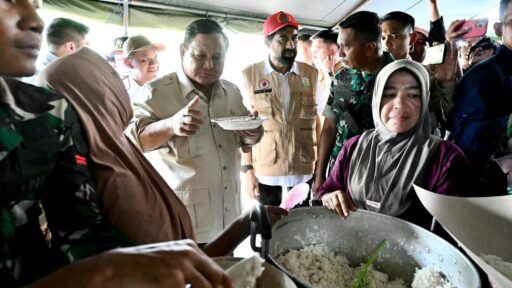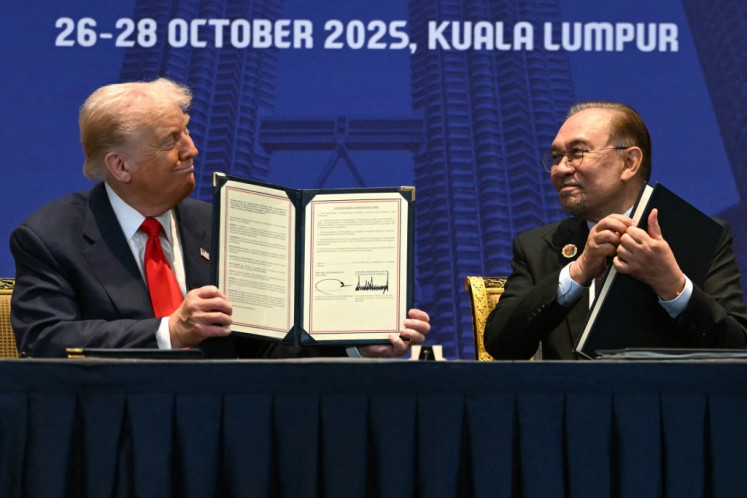Popular Reads
Top Results
Can't find what you're looking for?
View all search resultsPopular Reads
Top Results
Can't find what you're looking for?
View all search resultsInterrogating the urban, the rural
The articles of Achmad Munjid and Hilman Latief published in this newspaper (Aug
Change text size
Gift Premium Articles
to Anyone
T
he articles of Achmad Munjid and Hilman Latief published in this newspaper (Aug.16 and 29, and Sept. 18) tempted debate. Hilman commented on Munjid’s article in which he proposed a novel typology between deep Islam and thick Islam.
The former, Munjid says, is a phenomenon whereby Islam developed as a set of practices that arose from the lived experiences of people mainly in rural areas. In contrast, the latter emerged in urban contexts, where people who previously were not steeped in Islamic practices suddenly “found” Islam in the context of a wide urban-based Islamization process; they developed “born-again” attitudes and assertiveness, thereby presenting themselves as being spiritually superior to others.
In his critique of Munjid’s typology, Latief questions the distinction between the two categories, demonstrating how both strands can easily be found in urban and rural contexts alike. For Latief, symbolic representation of Islam is a character of the religious expression in public domains.
In questioning the typology, however, Latief leaves out what for me is the more important question to pose — that of the rural and urban as two ideological constructs. It is the aim of this article to address this issue, hoping to show how perhaps this time-honored typology of the country and the city is no longer useful in our analysis of socio-cultural phenomena.
Reading Munjid’s almost Hardyesque representation of the rural, one is reminded of the “green” language of eighteenth century English poetry. William Wordsworth, an eminent representative of this genre once sung, In nature and the language of the sense,/ The anchor of my purest thoughts, the nurse,/ The guide, the guardian of my heart, the soul/ Of all my moral being.
Here the message is clear. It is a recognition of one’s place in the midst of natural forces that continue to shape oneself but are often forgotten. Nature then, as manifested in the rural and bucolic way of life of the countryside, is what one must seek to learn from, not seek to control.
The rural becomes the habitus in which an almost ideal expression of social practices materializes and is internalized by its inhabitants in their daily lives. Thus, religion, far from being an arena of symbolic evocations, becomes a reality embodied by the people. Here Islamic identity needs no expression.
Such lines of thinking — that place culture as the fulcrum of geographical formation, which in turn paves the way for the rise of socio-cultural phenomena such as what Munjid describes as deep Islam — have their shortcomings. The most serious consequence of attributing causal power to culture is that it obscures many important issues such as the origin, transmittal and differentiation within a population of various cultural characteristics.
Our attention therefore should be turned towards observing how the ordering of culture is produced and sustained. As Stuart Hall reminds us, such a process of ordering is always the result of concrete sets of practices and relations in which the constitution of a dominant cultural order implies the subordination of alternatives.
In this way, culture should be more fruitfully defined in an historical paradigm, highlighting its intricacies in terms of social formation, cultural power, domination and regulation, resistance and struggle.
What this means is that we should recognize the embededness of geographical knowledges and constructs (such as urban and rural) within wider cultural discourses. Culture is not a residual category, as many anthropologists have argued, but the very medium through which social change is experienced, contested and constituted. For them, the unproblematic concept of landscape identifies sites as the product of stable, pre-modern and agricultural societies threatened by the process of modernization.
In opposition to this, landscape should be seen as a sophisticated cultural construction; a particular way of composing, structuring and giving meaning to the external world whose history has to be understood in relation to the material appropriation of land.
Landscape, be it urban or rural, must be scrutinized as configurations of symbols and signs, in which images, texts and languages of landscape are to be seen as signs that present a deceptive appearance of naturalness and transparency, concealing an opaque, distorting, arbitrary mechanism of representation. Landscape is a process of ideological mystification.
The social scientific studies of Indonesia are overwhelmed by typologies. These more often obscure rather than illuminate. While applauding Munjid for his courageous attempt to offer another typology, I also think there is a danger in his work in the sense of presenting another set of ideological constructs that can be deployed in an ideological battle. While recognizing deep Islam and thick Islam as two ideological constructs, we must ask whether these two would still be useful as analytic categories.
Rather than seeing the two artifices and their relationships to different habitus, therefore, I suggest that we attempt to see culture as discursive medium in which knowledges, meanings and identities are constructed and communicated through symbolic and representational orderings.
This perspective would lead us to see the landscape, whether urban or rural, as unstable and contested terrain, wherein competing and dissenting voices provide multiple meanings that we should excavate. Too much focus on representation could amount to overlooking the social and material process of the everyday. It is to the intersections between representations, discourses, material things, spaces and practices— the intertwined and interacting material and social world, that we must turn our attention to.
The writer is a doctoral student in Anthropology & History at the University of Michigan, Ann Arbor.










